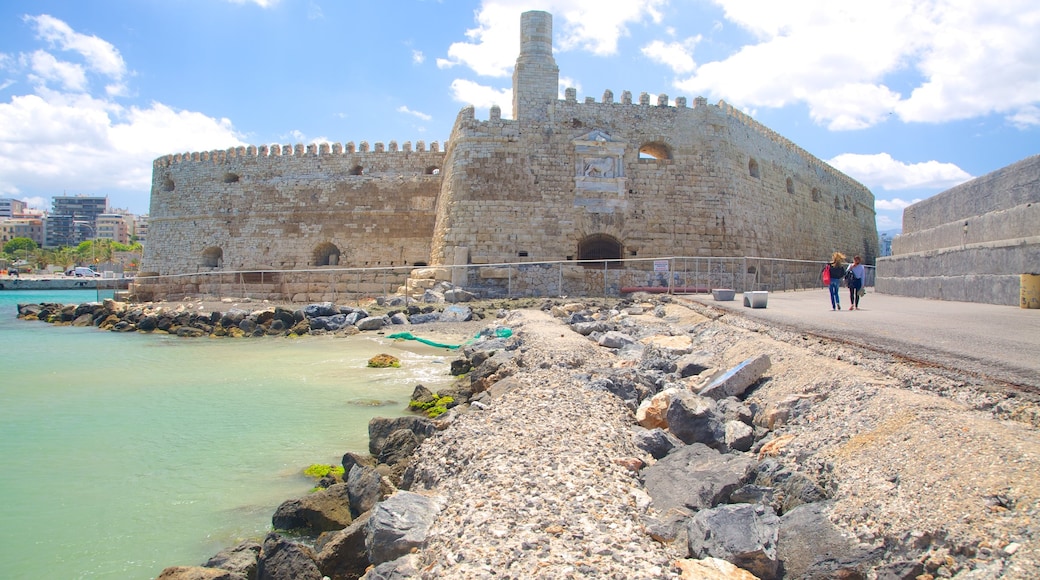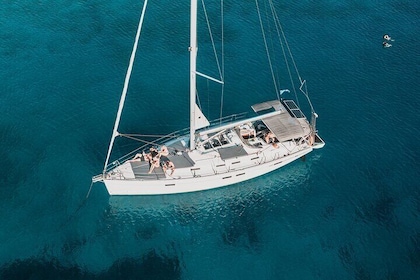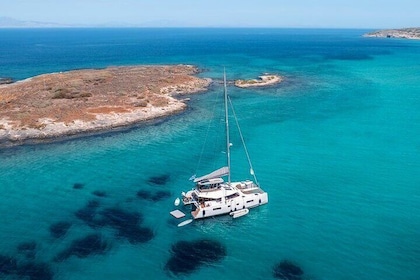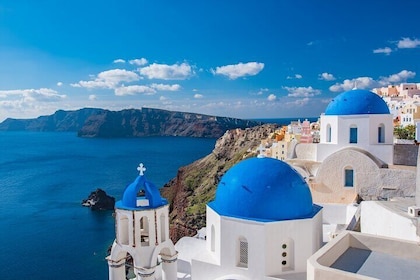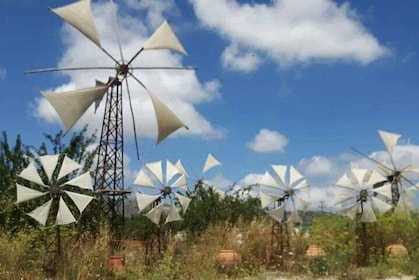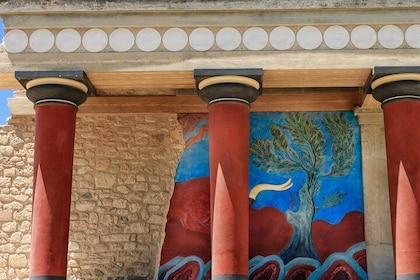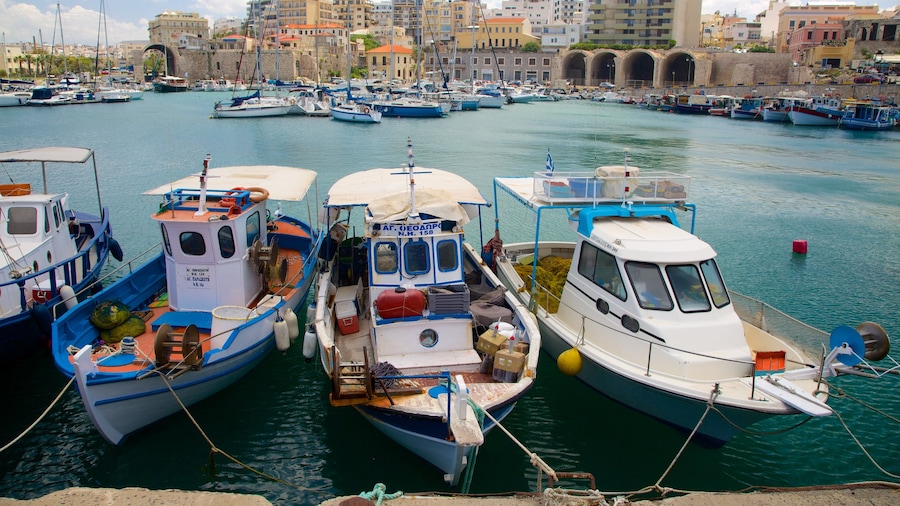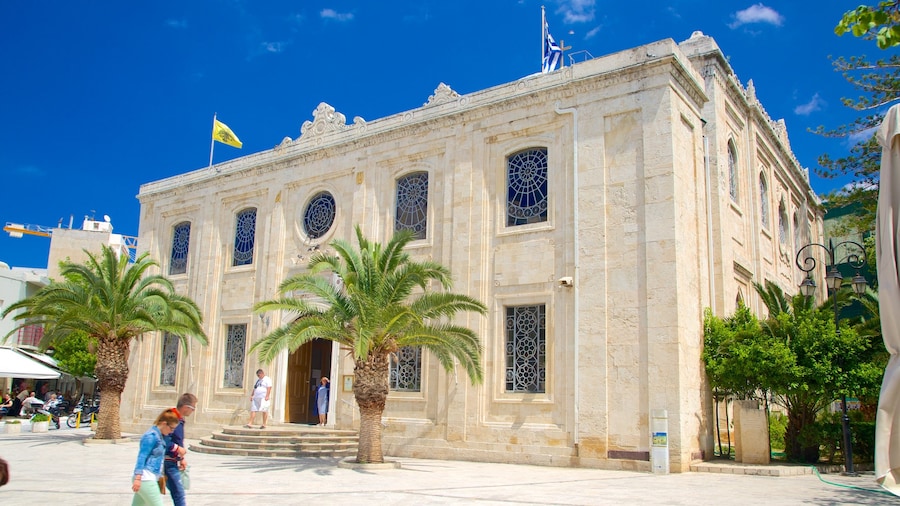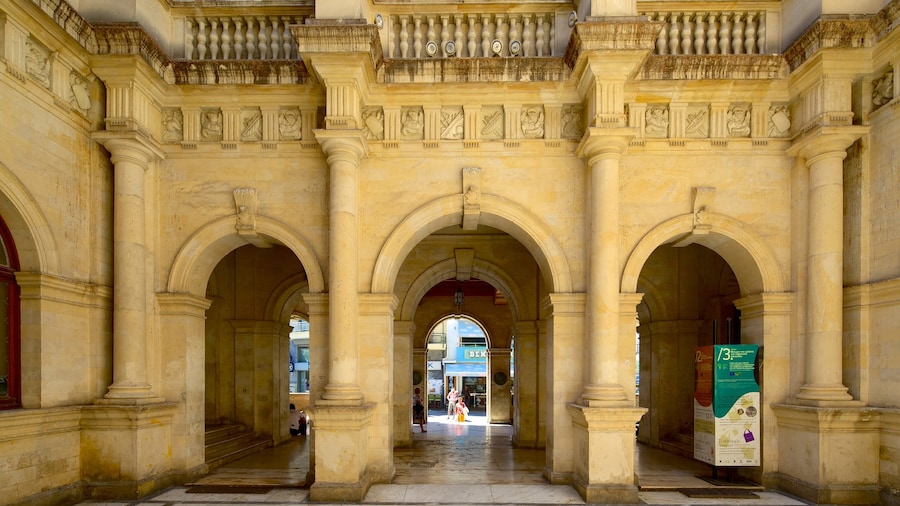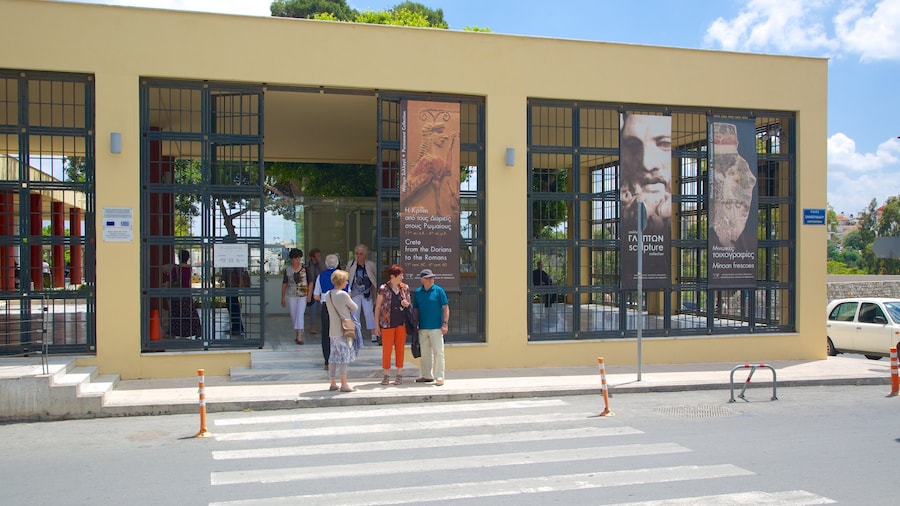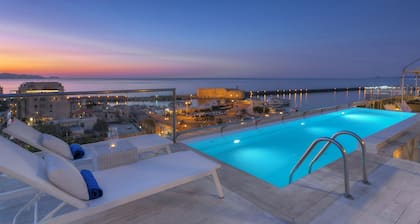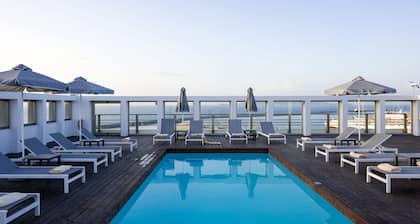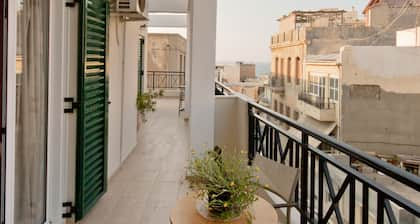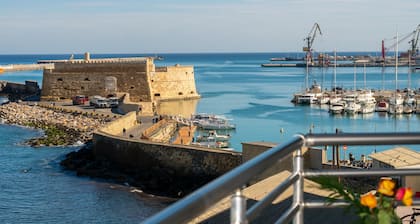Stand inside Koules Fortress and look out across the Heraklion harbour just as sentries who guarded the city from attack over 500 years ago would have done. Visit the soldiers’ barracks and prison and see where the cannons were positioned to fire upon approaching enemy vessels. Don’t miss the impressive marble reliefs depicting St. Mark’s lion, the symbol of Venice, on three of the walls of the fortress.
Records show there has been a fortress of some description at Heraklion harbour since around the 10th century. The current structure was built by the Venetians between 1523 and 1540. It was previously known as Rocca a Mare, or “rock of the sea.” The current name is taken from the Turkish word for fortress. Notice its imposing square shape and sturdy walls, which have made it the most prominent building in Heraklion. Many see it as a symbol of the city’s strength and longevity.
Walk from the port to see the fortress’s bulky form standing prominently on the harbour’s western breakwater. As you get closer, look for the large marble reliefs of St. Mark’s lion.
Enter the fortress and make your way through its 26 rooms. Note the low, curving archways that separate the different rooms. See where the soldiers used to live and visit the weapons stores. Sometimes these rooms host art exhibitions or performances so be sure to ask if anything is happening during your visit.
Explore the rooms which were used as prisons for Cretan rebels and learn about why some people believe the fort to be haunted. Make your way to the top and look through the ramparts toward the broad ocean before you. Imagine yourself as a Venetian guard scanning the horizon for Turkish invaders.
Koules Fortress is located on the western side of Heraklion harbour. It is closed on Mondays. There is a small charge for entry.
